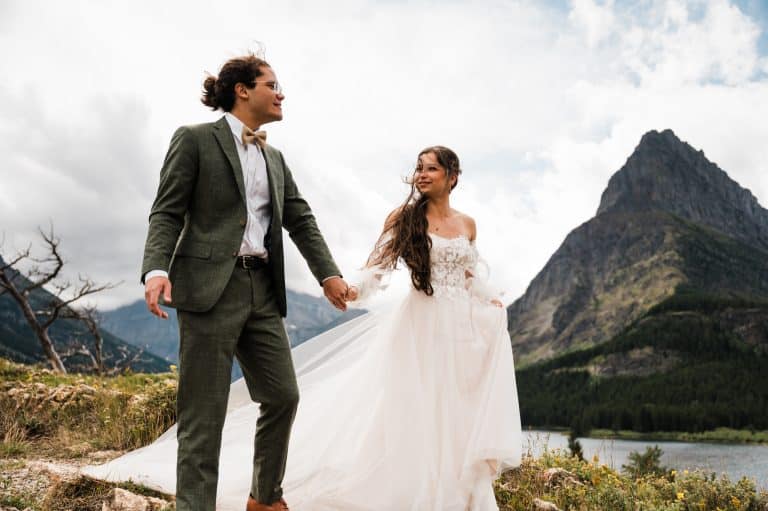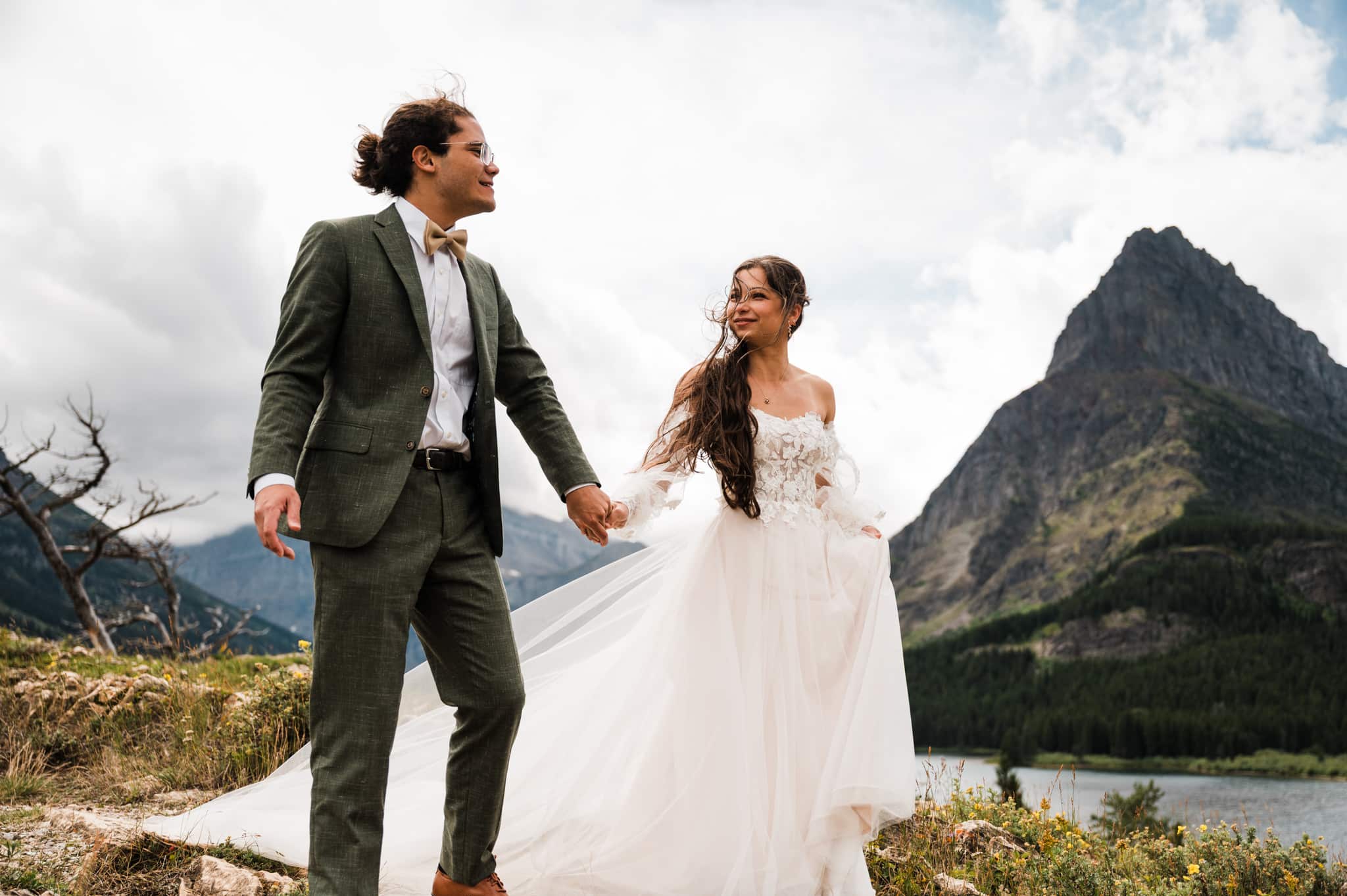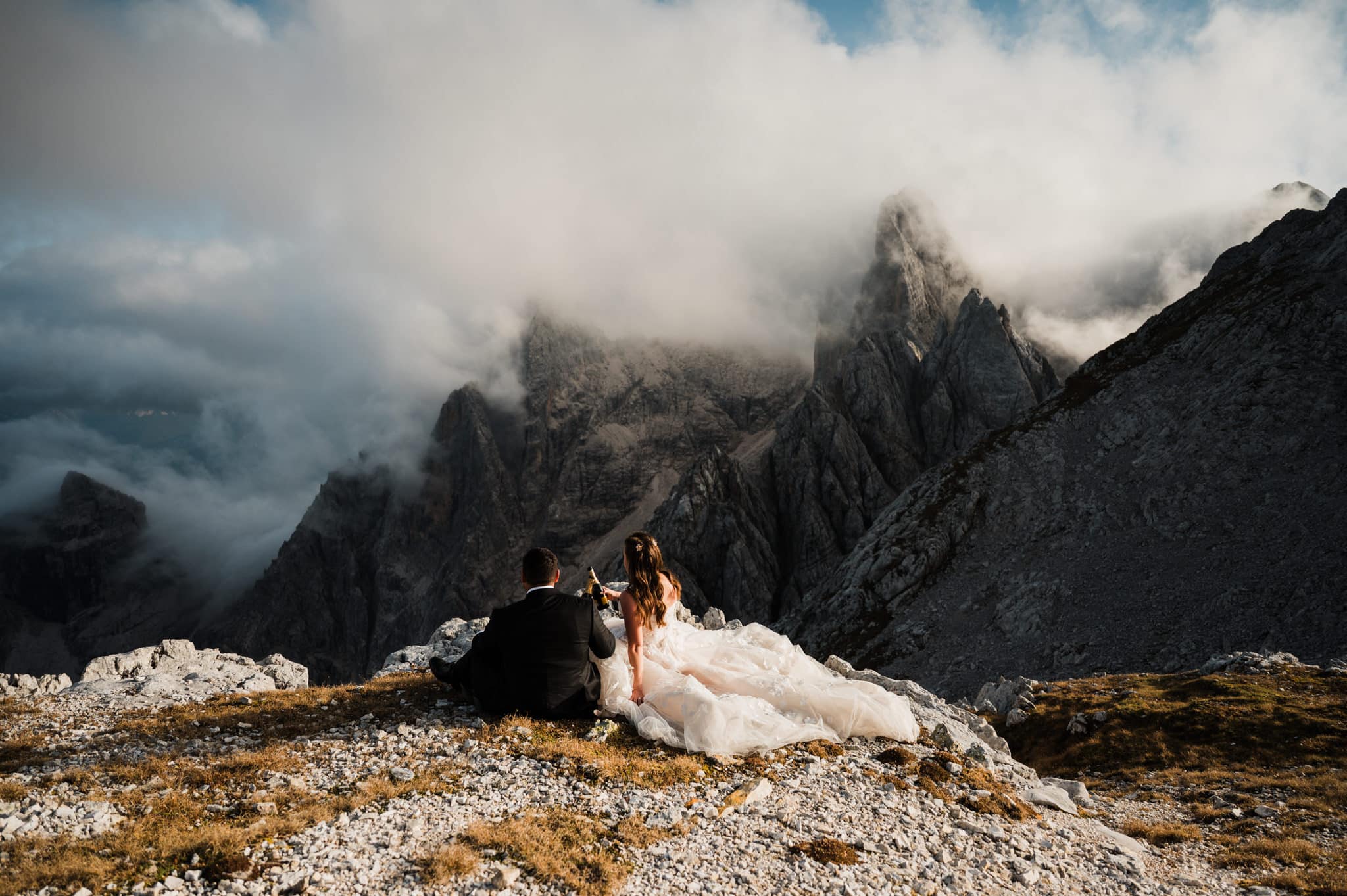How to Follow Leave No Trace Principles During Your Elopement
It’s always bothered me when I see people violating rules and regulations for the sake of an Instagram photo, or just because no one was watching. But a few weeks ago, the disregard for public lands in Banff National Park and Glacier National Park was so rampant, it was difficult to not say something. For me, I find saying something difficult when I’m surrounded by dozens of other people who are also not “Leave No Trace friendly”.
I started thinking, do people even know what impacts their choices are making on the environment? Maybe not. No matter how into Leave No Trace you are, there’s always something else you can be doing. But let’s start with 3 of the basics, and other simple things people can do to leave a place better than they found it:
OBEY SIGNAGE, STAY ON ESTABLISHED TRAILS & HARD SURFACES
I can’t begin to tell you how many people have gone off trail and walked right past the signs instructing hikers to stay on the trail. Take an extra moment to read boards and signs at trailheads and along the trail. If there is information, there’s a good chance it’s pretty key info that hikers should have.

At Glacier National Park, along the Hidden Lake Trail, signs are all over the place noting to stay on the trail to prevent environmental destruction. A family decided to walk past a sign to sit on a patch of dirt to have a picnic. It was obvious others had done it before, to create the worn patch of earth. Slowly, that patch of worn earth will spread, due to people sitting on its edges and destroying the nearby grass and other flora. Even if you don’t sit on the grass, you may be destroying delicate root systems of nearby plants.
In the backcountry, there are instances where you’re required to go a little “off trail” (e.g. to pitch a tent, use the restroom, or hang a bear line). It’s important to stay on hard surfaces, like rock and packed earth. Avoid stepping on plants – even the most innocuous actions can have far reaching consequences. Some plants are indicator plants – that means they can be traced to the decline of animals or plants higher up the food chain. For instance, when stoneflies disappear due to aquatic pollution (from humans that affect the environment), bull trout are put into danger. Stoneflies are a main food source for bull trout. When bull trout dwindle, other animals like grizzly bears and eagles lose a main food source. It just snowballs from there.
LEAVE IT CLEANER THAN YOU FOUND IT
When my husband and I go camping or backpacking, when clean up our own remnants, and then each find at least 10 pieces of trash. If our camp site is immaculate, we move to the next open camp site. Sometimes we’ll compete to see who can find the weirdest/largest item. Or who can find the most bottle caps (y’all, they’re everywhere).
Bring a small plastic bag with you when hiking or visiting a national park or other public land. See a piece of trash? Use your bag to collect it, or throw it in a nearby garbage can. You’d be surprise how little time it takes to throw a piece of trash away (which always boggles my mind that people don’t take an extra few seconds to find a trash can).
PUT YOUR MONEY WHERE YOUR MOUTH IS

For the love of all things, pay your park fees. Don’t try to sneak in after hours when no staff is on duty, or take your chances with a randomly inspected forest service location. Better yet, by an annual parks pass, whether that’s a national parks pass, forest service pass, or something specific to your local area. Often times they’re priced so if you’re visiting more than 3 paid sites, you’re already saving yourself money.
Another option (in addition to paying your park fees)? Donate to a nonprofit that works to protect public lands. There are many of them, but the ones I prefer are:
The Sierra Club**
National Park Foundation**
Access Fund**
Glacier National Park Conservancy**
Wilderness Society
** S Photography sends a portion of your elopement/intimate wedding package to one of these nonprofits (your choice)
Paying your park fees and donating to nonprofits all go toward keeping parks clean and healthy for future visitors. They help fund restoration projects, species research and study, intern wages, programs, and so much more. Full disclosure, I was an environmental intern with the BLM on the Oregon Coast. I helped educate schoolkids on field trips and other visitors about rocky intertidal ecosystems and marine biology. I had a small stipend that was funded by grants from nonprofits (not all your taxes can be spent wherever). Regardless of whether you agree with where government allocations are being spent, the fact remains that nonprofits benefit a lot of things. You can donate an amount as low as $5 or $10 to some organizations. Make sure to research any organization. Charity Navigator has a lot of good information on nonprofits and rates them on a 4 star rating scale.
THE BOTTOM LINE
There are so many small ways you can make a difference in the environment. Obey signage, be a good example for other visitors, pick up trash if you see it, politely say something to people you see blatantly disregarding park rules, donate to a nonprofit you love, etc.
Instagram or simple lack of respect is NOT a valid reason to destroy a landscape. Imagine going some place (for me, it’s Glacier NP) that you want to immediately visit over and over again. Now imagine the next time you visit – the area is totally different. So many worn patches of earth, less plants, dying trees, you don’t see nearly as many animals (if any at all), trash everywhere. That’s what happens when just a small percentage of visitors each day don’t show public lands the care they deserve.
















